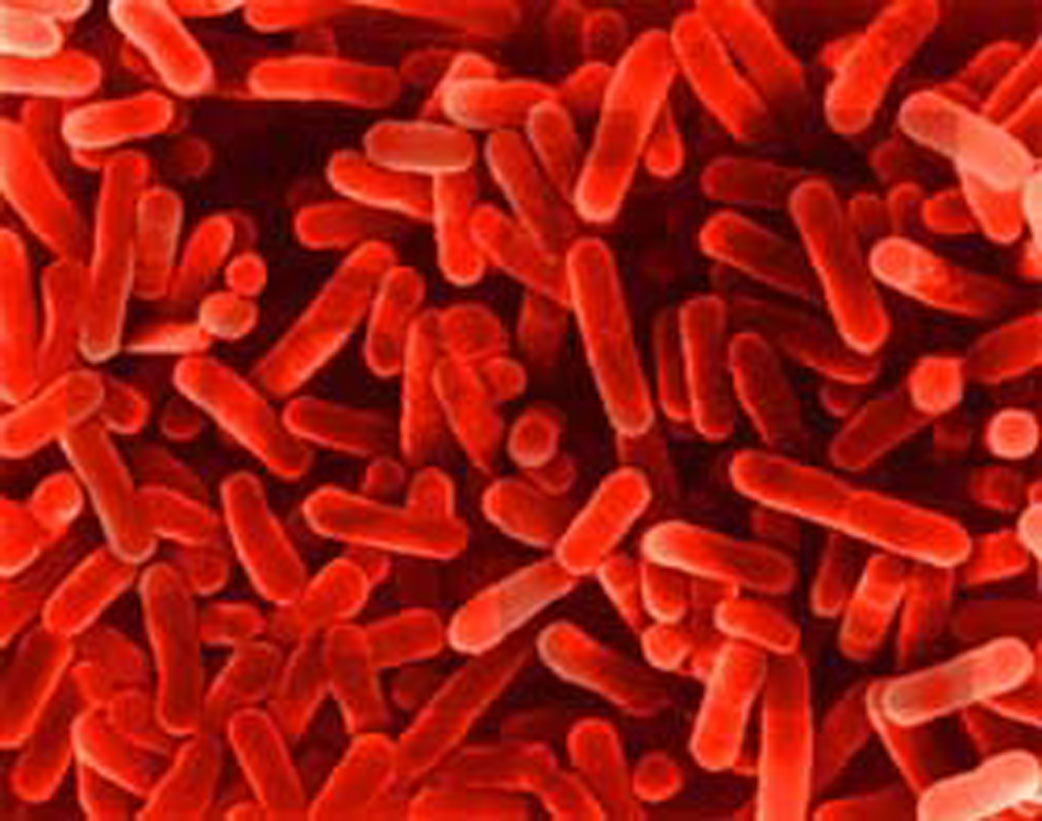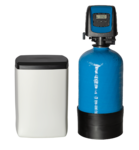Hydrotense Europe How does it work? Ultra Violet Disinfection
Ultra Violet Disinfection

Ultraviolet Sterilization Technology
Ultraviolet disinfection systems are mysterious to many people – how can “light” kill bacteria? But the truth is it can. Ultraviolet (UV) technology has been around for 80 years, and its effectiveness has been well documented both scientifically and commercially. It is nature’s own disinfection/purification method. With consumers becoming more concerned about chlorine and other chemical contamination of drinking water, more dealers are prescribing the ultraviolet solution suitable for both small flow residential applications as well as large flow commercial projects.
What is UV and how does it work?
Ultraviolet is one energy region of the electromagnetic spectrum, which lies between the x-ray region and the visible region. UV itself lies in the ranges of 200 nanometres (nm) to 390 nanometres (nm). Optimum UV germicidal action occurs at 260 nm.
Since natural germicida l UV from the sun is screened out the earth’s atmosphere, we must look to alternative means of producing UV light. This is accomplished through the conversion of electrical energy in a low-pressure mercury vapor “hard glass” quartz lamp. Electrons flow through the ionized mercury vapor between the electrodes of the lamp, which then creates UV light.
l UV from the sun is screened out the earth’s atmosphere, we must look to alternative means of producing UV light. This is accomplished through the conversion of electrical energy in a low-pressure mercury vapor “hard glass” quartz lamp. Electrons flow through the ionized mercury vapor between the electrodes of the lamp, which then creates UV light.
As UV light penetrates through the cell wall and cytoplasmic membrane, it causes a molecular rearrangement of the microorganism’s DNA, which prevents it from reproducing. If the cell cannot reproduce, it is considered dead.
Design and Dosage
The design of an ultraviolet sterilizer has an extremely important bearing on how the UV Dose is delivered and Dosage is the most critical function of UV disinfections. As individual UV lamps emit a set amount of ultraviolet energy, it is important that a system be sized correctly. Flow rates are the determining factor and must not be overstated. Contact time, which is the time the water is within the sterilization chamber, is directly proportional to Dosage, which is the amount of energy per unit area (calculated by dividing the output in watts by the surface area of the lamp), and thus the overall effectiveness of microbial destruction in the system. This product of intensity and time is known as the Dose and is expressed in micro watt seconds per centimeter squared (uWsec/cm2).
Divide by 1000 to express the dose in mJ/cm2, the preferred notation.
For maximum UV transmission a “hard glass” quartz sleeve is recommended for two main reasons. It isolates the lamp from the water to offer more uniform operating temperatures and allows for higher UV output into the water.
A variety of optional features may be added on to the UV sterilizers. They include UV monitoring devices that measure the actual UV output, solenoid shut-off devices that will stop the water flow in the event of a system failure, flow control devices to properly limit the water flow in the units, audible and visual alarms (both local and remote) to warn of lamp failures, high temperature sensors to monitor excessive temperatures in the reactor chamber or control panel, and hour meters to monitor the running time of the UV lamps.
Following are the advantages of UV sterilization:
-
Environmentally friendly, no dangerous chemicals to handle or store, no problem of overdosing (it’s impossible).
-
Low initial capital cost as well as reduced operating expenses when compared with similar technologies such as ozone, chlorine, etc.
-
Immediate treatment process, no need for holding tanks, long retention times, etc.
-
Extremely economical, hundreds of gallons may be treated for each penny of operating cost.
-
No chemicals added to the water supply – no by-products (i.e. chlorine + organics = trihalomethanes).
-
No change in taste, odor, pH or conductivity or the general chemistry of the water.
-
Automatic operation without special attention or measurement, operator friendly.
-
Simplicity and ease of maintenance, periodic cleaning (if applicable) and annual lamp replacement, no moving parts to wear out.
-
No handling of toxic chemicals, no need for specialized storage requirements, no WHMIS requirements.
-
Easy installation, only two water connections and a power connection.
-
Compatible with all other water processes (i.e., RO, filtration, ion exchange, etc.)
Factors Affecting UV
Because UV does not leave any measurable residual in the water it is recommended that the UV sterilizer be installed as the final step of treatment and located as close as possible to the final distribution system. Once the quality of your water source has been determined, you will need to look at things that will inhibit the UV from functioning properly (e.g., iron manganese, TDS, turbidity, and suspended solids).
Iron and Manganese will cause staining on the quartz sleeve and prevent the UV energy from transmitting into the water at levels as low as 0.03 ppm of iron and 0.05 ppm of manganese. Proper pretreatment is required to eliminate this staining problem.
Total Dissolved Solids (TDS) should not exceed approximately 500 ppm. There are many factors that make up this equation such as the particular make-up of the dissolved solids and how fast they absorb the sleeve, again impeding the UV energy from penetrating the water.
Turbidity is the inability of light to travel through water. Turbidity makes water cloudy and aesthetically unpleasant. In the case of UV, levels over 1 NTU can shield micro organisms from the UV energy, making the process ineffective.
Suspended Solids need to be reduced to a maximum of 5 microns in size. Larger solids have the potential of harbouring or encompassing the micro organisms and preventing the necessary UV exposure. Pre-filtration is a must on all UV applications to effectively destroy micro organisms to a 99.9% kill rate.
Additional Factors affecting UV is temperature. The optimal operating temperature of a UV lamp must be near 40°C (104°F). UV levels fluctuate with temperature levels. Typically a quartz sleeve is installed to buffer direct lamp-water contact thereby reducing any temperature fluctuations.
UV Applications
One of the most common uses of ultraviolet sterilization is the disinfection of domestic water supplies due to contaminated wells. Coupled with appropriate pre-treatment equipment, UV provides an economical, efficient and user-friendly means of producing potable water.
The following list shows a few more areas where ultraviolet technology is currently in use:
surface water laboratories bottled water plants
ground water wineries pharmaceuticals
cisterns dairies mortgage approvals
breweries farms electronics
hospitals hydroponics aquaria
restaurants spas boats and RV’s
vending canneries printing
cosmetics food products butter processing
bakeries distilleries petro chemicals
schools fish hatcheries photography
boiler feed water water softeners pre- and post-reverse osmosis
and much more…
Installation and Maintenance Guidelines
Once the application has been determined, you should find a location that offers easy access for service. You will need to have access to the pre-filters, to the UV chamber for annual lamp changes and regular maintenance on the quartz sleeve. You will want to locate near an electrical outlet. *Note: Using a UV system and a pump on the same electrical line may cause problems with and shorten the life of the UV lamp and ballast. UV units should be installed on the cold water line before any branch lines and should be last point of treatment. All points of the distribution system after the sterilizer must be chemically “shocked” to ensure that the system is free from any downstream microbial contamination. Lamp changes should be done at least once every year. Filter changes are done according to the water soapy solution. If there is residue left, you may need to use a non-abrasive cleaner that does not scratch the surface and is formulated to remove iron and scale build-up. Do not leave fingerprints on the glass! It is imperative to follow the manufacturers guidelines on water quality and operational procedures.
Summary
The need for ultraviolet sterilization products can be found in virtually all areas in both residential and commercial applications alike. Its simplistic design, ease of maintenance and low capital and operating costs make UV the number one choice in contaminated water situations. Health professionals and water specialists are becoming aware of possible side effects of chemical sterilizers and their resultant chemical by-products. Because of its advantages, UV irradiation should become a very popular choice for the disinfection of water supplies in the 21st century.
Next time, purify water “natures way”…use ultraviolet light.



